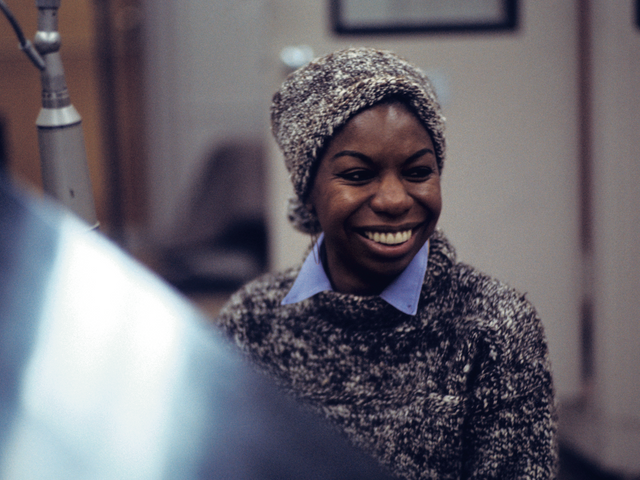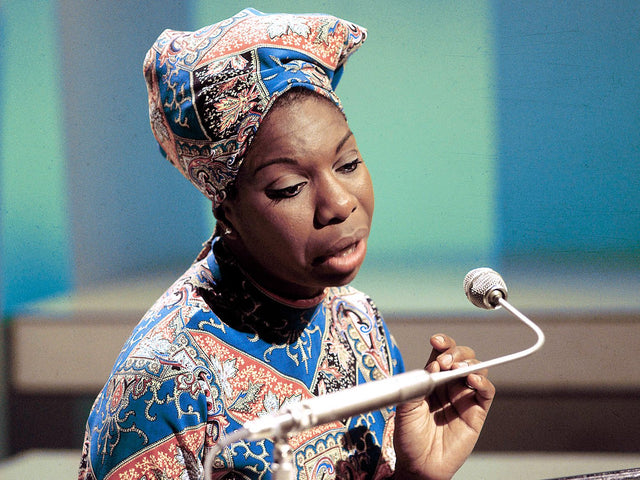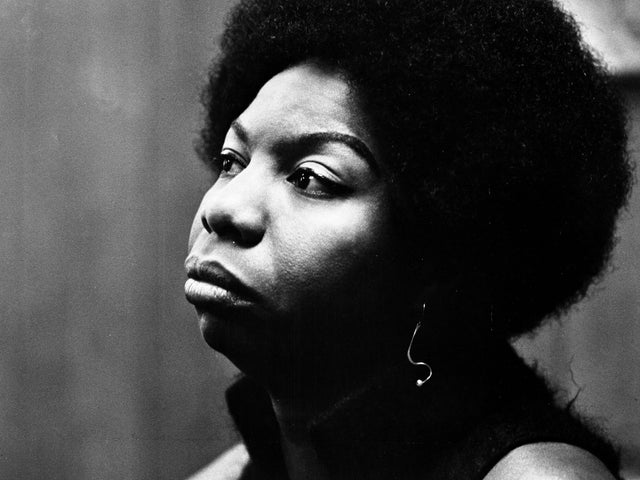Kanye West Menyanyikan Blues
Trying To Decode The Significance Of Kanye Sampling Nina Simone Over His Career
Nina Simone tetap menjadi salah satu artis yang paling dihormati dan dirayakan dalam sejarah Amerika, tetapi dia mungkin juga diingat sebagai salah satu yang paling banyak disampling. Renungannya tentang kehidupan, cinta, kebebasan, dan tubuh Black telah digunakan kembali dan diinterpretasikan kembali selama beberapa dekade; begitu banyak artis yang berusaha menjaga warisannya tetap hidup dengan membangun atas cetakannya untuk musik yang bisa mencintaimu dengan tangan yang terkatup.
Kanye West adalah personifikasi berjalan dari ide ini, membandingkan musiknya sendiri dengan kopi pagi sebagai cara untuk memulai kepercayaan diri seseorang untuk menghadapi kehidupan. Namun, implikasi politik selalu ada di seluruh katalognya juga. Mungkin ini takdir bahwa dia telah mengambil sampel Nina lima kali dalam karirnya, setiap momen lebih bermakna dan berbeda dari yang sebelumnya. Bagaimana dia memanggilnya, dan mengapa? Apakah metodenya berubah? Bagaimana dia berdialog hari ini dengan masa lalu dengan cara yang inventif?
Dalam merayakan rilis VMP bulan ini, saya menyelami lima album Kanye yang memiliki sampel Nina Simone untuk mencari benang merah dalam aktivisme mereka untuk rakyat dan hubungan mereka dengan roh juga. Ada saat-saat untuk berjuang, mundur, menuntut lebih dari diri sendiri sebanyak dunia. Saya menemukan semua hal di atas benar, dan lebih banyak lagi saat merenungkan pertumbuhan karyanya dengan cara Ye memanggil Nina untuk membingkai kekuatan kata-katanya. Anda akan menemukannya dalam keadaan paling marah, frustrasi, penuh harapan, dan tak terjangkau dengan Ms. Simone membimbing tangannya.
"Get By" (2003) -> "Sinnerman" (1965)
Sampling Nina yang pertama kali didokumentasikan oleh Kanye terjadi sebelum ia menjadi terkenal sebagai MC, di era pra-College Dropout di mana Ye muda berada di NYC mengumpulkan beat dari Hov dan siapapun yang bisa dia ajak kerja sama. Di "Get By" milik Talib Kweli, sebuah single khas di katalog Talib, Kanye menggunakan interpretasi Nina dari "Sinnerman," sebuah karya musik rakyat kulit hitam tradisional yang menggambarkan seseorang yang memanggil Tuhan untuk melawan setan dan meminta pengampunan. Tepukan yang ditemukan di tengah lagu Nina dibalik secara perkusif, didukung oleh melodi mereka sendiri dan jeda drum dengan Nina Simone yang teriak kepada Tuhan di awal lagu.
Tepukan dan melodi tersebut kemudian didukung oleh suara Talib dan tema ketahanan melalui penindasan sistemik, kapitalisme, dan kompleks industri penjara di antara banyak masalah lain yang ada di New York, tempat asalnya. Talib mengulurkan tangannya kepada tradisi blues dan folk dengan mendokumentasikan penderitaan orang-orangnya; kerangka kerja dari rekaman Nina dipadukan dengan paduan suara gospel langsung untuk bagian chorus, memberikan tekstur yang hangat dan diperbarui pada nuansa religius yang ditemukan di “Sinnerman.” Ini adalah badai simbolisme yang sempurna: seniman kulit hitam memberikan penghormatan kepada leluhur mereka dengan memperbarui tradisi dengan jiwa yang benar-benar baru.
"Bad News" (2008) -> "See-Line Woman" (1964)
Karya ini adalah panggilan kembali yang lebih halus kepada karya Nina, lebih fokus pada tema asli sambil menawarkan jembatan minimalis ke masa kini. “Bad News” adalah ode penuh penyesalan kepada seorang kekasih yang dikhianati, merinci reaksi Kanye saat mengetahui bahwa kekasihnya adalah seorang pengkhianat yang melarikan diri dengan hatinya dan merusak cinta yang dimilikinya untuknya. Dalam “See-Line Woman,” Nina menyanyikan tentang seorang wanita yang menyakitkan yang bisa berdandan dan melolong, mengambil uang seorang pria, dan meninggalkannya tanpa berpikir dua kali. Di sini, peran gender mengubah konteks: di mana lagu Nina datang sebagai peringatan bagi dunia, lagu Kanye adalah kisah dari sudut pandang orang pertama sebagai korban dari wanita yang sama yang dinyanyikannya bertahun-tahun yang lalu, meskipun dia mengklaim menulis sebagian darinya dari perspektif seorang wanita.
Periode 808s & Heartbreak Kanye menggabungkan pop synth yang berat dan Auto-Tune sebelum hip-hop pada era itu sepenuhnya menyerap keduanya sebagai cara penciptaan default. Setelah perilisan 808s, banyak yang tidak tahan menyebutnya album rap karena ruang pop artful yang ia huni di belakang kisah romansa yang buruk dan kehilangan ibunya, mendiang Donda West. Kehalusan muncul di jeda drum: ia mengambil backing dari “See-Line Woman” dan menambahkannya, melapisi synth, piano, dan string untuk memberikan cukup ruang baginya untuk bernyanyi. Setengah dari album adalah perjalanan tanpa vokal, di mana lagu Nina menekankan berat suaranya untuk mengisi ruang antara perkusif yang sporadis dan para pria yang mendukungnya.
"New Day" (2011) -> "Feeling Good" (1965)
Kanye dan Jay’s Watch the Throne adalah perjalanan hiper-kapitalis yang mendebarkan dengan beberapa momen lembut di antara momen-momen klasik dari rap flex maksimalis. “New Day” adalah pihak luar yang lembut, memisahkan dirinya dari momen-momen besar kritik album - membandingkan Irak dengan “CHIRAQ” dan mengajukan kasus untuk lebih banyak kekayaan kulit hitam - untuk menyajikan momen refleksi pribadi antara dua pria yang berada di ambang keayahbapaan. Saat Nina menyanyikan tentang dunia yang benar-benar baru, beralih ke simbol-simbol alam dan perdamaian untuk mengartikulasikan kebebasan dari hari baru yang benar-benar baru, The Throne membalik dan mempitch ulang sampelnya, menandai pertama kalinya ia mengatur ulang frasa-frasa tersebut untuk mengontekstualisasikan kembali makna aslinya.
Dengan bantuan RZA dan Mike Dean, potongan Nina menggerakkan instrumen berat melalui ketidakpastiannya sendiri, kembali ke refrains triumphant dari terompet dan piano gelap. “Hidup baru” dan “hari baru” berbicara tentang penebusan melalui generasi berikutnya. Bagi Kanye, yang menyalahkan dirinya sendiri karena memindahkan ibunya ke L.A. dan merenungkan penerapan ide-ide Republik pada putranya yang belum lahir untuk memastikan dia disukai oleh Amerika yang kulit putih. Jay merasa menyesal karena paparazzi menginvasi kehidupan putranya yang belum lahir sebelum dia bisa mengambil langkah pertamanya, dan membayangkan minuman pertama mereka dalam kemewahan karena dia tidak pernah harus menjual obat untuk keluar. Melalui semua kesalahan mereka, yang diperdengarkan untuk umum, masa depan anak-anak mereka menjadi “New Day” saat optimisme Nina memberikan cahaya penuntun di kegelapan.
"Blood on the Leaves" (2013) -> "Strange Fruit" (1965)
Saya ingat membaca judul lagu itu jauh sebelum saya mendengarnya. Saya mengantisipasi salah satu pernyataan politik yang paling mendalam dalam karir Kanye, dengan Yeezus datang di belakang proyeksi "New Slaves" di seluruh dunia dan beberapa wawancara yang merinci keluhan Kanye tentang rasisme dan kelas yang ia hadapi dalam semua aspek kreativitasnya. Kali ini, ia mengontekstualisasikan kembali versi Nina dari “Strange Fruit” dengan penggarapan beat TNGHT untuk berbicara tentang bahaya dari hubungan yang salah. Interpretasi ulang dari citra yang begitu menyedihkan untuk subjek seperti ini dipertanyakan pada yang terbaik, tetapi Kanye jauh lebih percaya diri dalam mempersembahkan suara Nina dan memilih untuk membiarkan frasa-frasa lengkapnya utuh sepanjang beat.
“Blood on the leaves” dan “Leaves” seringkali diperoleh, “tubuh hitam yang bergoyang di angin selatan” berseberangan dengan rincian Kanye tentang dikelilingi oleh wanita dalam hasrat dan cinta, dan kembali lagi sebagai lapisan dengan interpolasi “Down 4 My Niggas,” merujuk pada magnolia dari “Strange Fruit” serta proyek Magnolia dari mana C-Murder berasal. Piano berlanjut, menghilang dan muncul kembali sambil bertabrakan dengan pola snare dan bergoyang sendiri selama outro solo Kanye. Hudson Mohawke - satu bagian dari TNGHT - mengatakan kepada Pitchfork: “Tidak ada pesan politik yang terlalu jelas dalam lirik akhir, tetapi dalam beberapa hal itu terlalu mudah.” Namun demikian, ada banyak yang bisa dikatakan tentang dekontekstualisasi lagu tentang penggantung menjadi lagu terinspirasi trap tentang selingkuhan di mana penggemar Kanye dari semua ras dapat menunggu penurunan dan memulai moshpit tanpa bahkan mengetahui asal usul sample. Tiga tahun sejak Yeezus dan saya belum membuat keterkaitan itu sendiri, tetapi pelaksanaan instrumentalnya memiliki kecemerlangan yang tidak biasa.
"Famous" (2016) -> "Do What You Gotta Do" (1968)
Dengan cara yang paling tepat waktu, “Famous” adalah reinterpretasi Nina yang paling multifaset dari Kanye hingga saat ini dalam hal menggeser konteks sonik sambil mempertahankan bentuk ketangkasan tematik. Ini berhasil dengan cara yang tidak dicapai pendahulunya: dengan mengatur ulang narasi Nina, mengajak seorang bintang pop wanita kulit hitam untuk menginterpolasinya, dan menjadikannya berdekatan dengan rekaman klasik lainnya untuk menghadirkan modernitas yang menarik hanya hip-hop yang dapat menyediakan dalam pertemuan budaya seperti itu. Di mana “Do What You Gotta Do” berbicara tentang perjuangan Nina untuk mencintai seseorang dengan membiarkannya pergi, “Famous” adalah komentar tentang dirinya sendiri, memperumit ide-ide cinta dan idolasi terhadap selebriti. Ini adalah upaya untuk mengambil kembali kebebasan seseorang dari cengkeraman ketenaran dan pengakuan akan sifat terlibat semua orang dalam permainan yang lebih besar, seperti yang ditunjukkan oleh video membingungkan dengan patung lilin selebriti terkenal yang semuanya berada di tempat tidur bersama.
Lagu dimulai dengan Rihanna menyanyikan lirik Nina secara langsung sebagai kerangka - bahkan Young Thug juga melakukan hal yang sama di draft sebelumnya - lalu memanggil suara Rihanna lagi untuk hook, mengatur ulang sedikit dari bait pertama untuk mengubah sudut pandang. Rihanna dapat mewakili dirinya, seorang teman dekat, seorang penggemar gila; ketegangan terletak pada ketidakjelasan tersebut. Suara asli Nina tidak muncul sampai akhir bait kedua, dilapisi di bawah sample populer dari “Bam Bam” oleh Sister Nancy dengan Swizz Beatz mengambil peran DJ untuk mengguncang kerumunan dari rekaman itu sendiri. Untuk pertama kalinya dalam karier Ye, ia membiarkan suara Nina dari sample “Do What You Gotta Do” tetap utuh, dengan lirik yang masih dipotong dalam urutan terbalik.
Michael Penn II (aka CRASHprez) is a rapper and a former VMP staff writer. He's known for his Twitter fingers.




